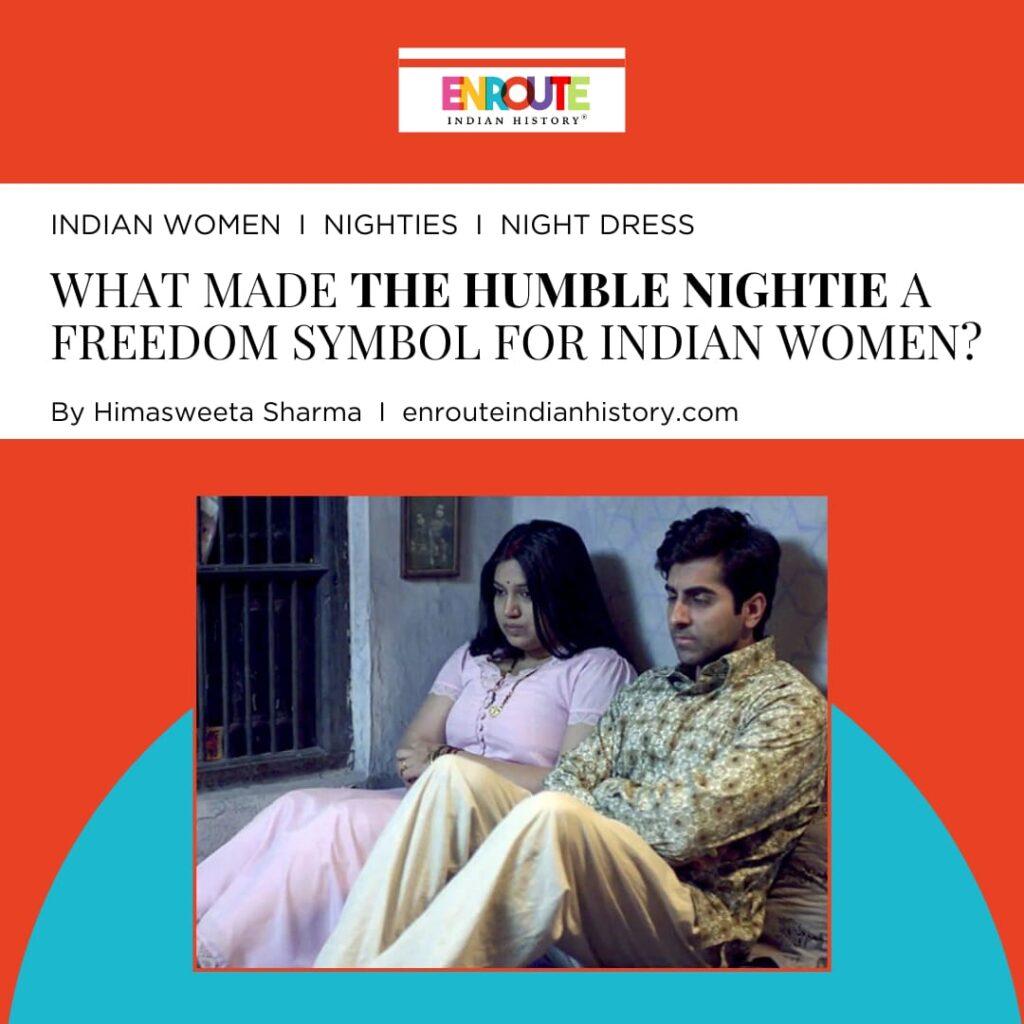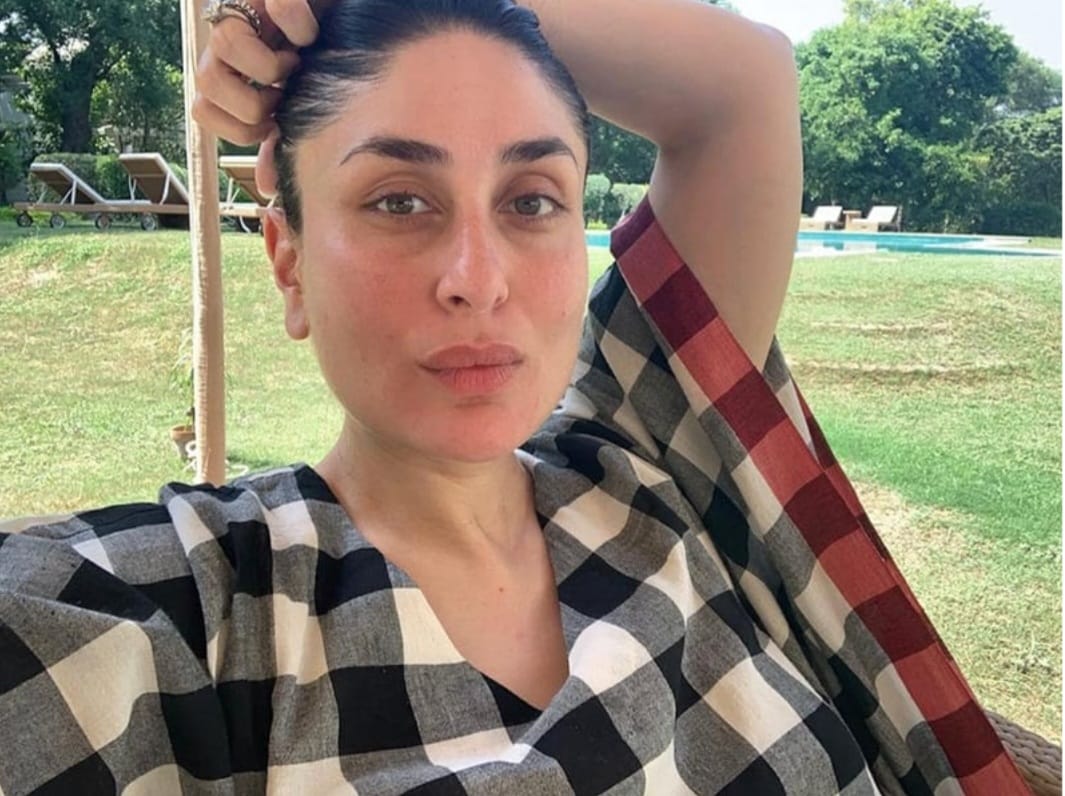
As the gentle glow of twilight begins to descend, women in the majority of India gracefully slip into the humble nightie after a day filled with chores around the house or office. In the silent whispers of the night, these nighties echo with the melodies of comfort and femininity for Indian women. These nighties, which have evolved from a mere piece of fabric to a symbol of comfort, act as a thread uniting women from India’s rural and urban landscapes, despite their diverse backgrounds. Interestingly, amidst everything, the loose folds of the nightie, on the other hand, soon became a metaphor for freedom for Indian women.
Inspired by men’s nightshirts and women’s nightchemises from the early 16th century, modern-day nighties are the most popular form of clothing among Indian women after the saree.
They are now available in a variety of fabrics to cater to the requirements of every individual woman, ranging from regular to maternity. The nightie, which was inherently a garment for the night, swiftly came to symbolise personal freedom for women throughout the nation, where sarees and salwars are the norm.
HISTORY OF NIGHTIES
Although the prevailing belief is that nighties first appeared in the Victorian era, a limited number of sources attribute their origin to ancient Greece. The term ‘peplos’ was commonly used to refer to these free-flowing garments in Greece, and both men and women wore them on a regular basis. When depicted in statues and paintings, Athena, the Greek goddess of wisdom, warfare, and handicraft, is most commonly seen wearing a peplos. The majority of historians, on the other hand, are of the opinion that the nightie made its first appearance as a nightgown during Victorian times. English women wore these floor-length nightgowns made of Indian muslin during the summer.

In India, Nighties have transitioned from a nightgown to a fundamental peice of clothing in women’s dailty lives.
During the 18th century, these English nightgowns were introduced to India by the women of the ‘Fishing Fleet.’ The ‘Fishing Fleet’ comprised a group of women who were sent to India with the purpose of serving as wives for men working in the East India Company. Because they had to fish for a husband in an unknown country, they became known as the ‘Fishing Fleet.’ It is possible that their interactions with Indians throughout their time in the country caused the Indian people to become acquainted with the concept of this foreign garment. Additionally, it was worn as a form of sleepwear throughout the year by women who were members of British families and lived in colonial India. The floor-length length of these nightgowns served as a symbolic representation of the dignity that an English woman must uphold within society.
Although the precise reason for the spread of nighties in India is unknown, it is possible that the Gulf boom among Malayalis in Kerela, the migration of Indians to the West, and the adoption of a Western way of life were the factors that contributed to the spread of nighties across the country. By the 1970s, nighties had become an indispensable component of the daily lives of women in India. They became known by various names across the country, the most popular being nightie and maxi. Not only did the nightie eventually become a catalyst for comfortable dreams for Indian women, but it also became a medium for transcending the norms of society. During the summer months, in Kerela, where women were required to wear sarees in the form of mundu-neriyatham, which was quite extensive, nighties permitted greater mobility and improved air circulation, which contributed to their popularity in the state. There is a possibility that the free-flowing nature and lightness of nighties, which were regarded as modest and acceptable by the majority of Indian societies, could be one of the reasons that nighties became so popular across the entire nation. Nighties made it possible for women to perform their domestic responsibilities without being restricted in their movement, including activities such as cooking and washing clothes. The nightie is one of the few products that gained popularity among its buyers not as a result of marketing strategies but rather because of its inherent comfort.
The growing popularity of nighties could be seen in the business sector as well, with many manufacturers taking on the role of producing nighties for Indian women. As more women became acquainted with them, the demand for nighties grew. Recognising the market opportunity, clothing companies began producing a variety of nighties to cater to the various preferences. A wide range of styles, fabrics, and designs of nighties, both cheap and expensive, entered the market. Maternity nighties were specifically designed to provide comfort and convenience for expectant mothers throughout their pregnancy. Even today, online shopping platforms dealing with lingerie, such as Clovia, Amante, and Zivame, have separate sections on their websites for nighties.
INDIAN WOMEN’S FREEDOM SYMBOL: NIGHTIE
In a nation where women’s attire is frequently determined by societal and traditional norms, the nightie occupies a middle ground between comfort and custom. The nightie’s simplicity and ease provide women with a sense of freedom, allowing them to navigate domestic spaces in their own unique ways. The freedom is not limited to the night, where the nighties allow them to move freely while sleeping, but has also permeated other areas of their daytime schedules. Without hesitation, women now run errands while wearing nighties. Women can be seen gracefully carrying the nightie adorned with a dupatta as they go for early morning walks or to drop their children off at the school bus stop. Whether it’s for shopping vegetables from mobile vendors or buying groceries from the nearby grocery shop, nighties have become a symbol of practicality, adaptability, and freedom for Indian women. Confidently wearing these humble nighties, a large number of women from various regions of the country get together in the evening to discuss their day. In an episode of ‘On the Couch With Koel’ on Headlines Today in 2010, the former Minister of External Affairs of India, Sushma Swaraj, stated how nighties were her first choice of attire while taking a dip in the Ganges; such was the power beheld by this simple yet significant garment.

Actress Kareena Kapoor post selfie of her wearing a ‘kaftan’. The Indian actor became the first to express her comfort in wearing kaftan at home during pandemic
Interestingly, in contrast, numerous societies attempted to put a ban on nighties, despite the fact that women embraced this newfound liberty while wrapped in their comfort. In November 2018, elders of Thokalapalli, a coastal fishing village in Andhra Pradesh, imposed a ban on nighties from 7 A.M. – 7 P.M. Anyone disobeying the village law was fined Rs. 2000, while individuals reporting the village sarpanch of such incidents were rewarded with Rs. 1000. The ban originated from the village elders’ perception of what they considered to be unsuitable for women wearing nighties while strolling the street and engaging in shopping. There are numerous households throughout the nation that prohibit their daughters-in-law from wearing nighties at any time of the day or night. A daughter-in-law is not permitted to appear before her in-laws while dressed in a nightie since it is considered sensual. A housing complex resident’s welfare society in Greater Noida prohibited the wearing of nighties and lungis in June 2023 on the grounds that they disrupted the decorum of the complex. Residents were instructed not to roam out in society in any of the aforementioned garments. When faced with circumstances of this nature, it becomes abundantly clear that in a number of Indian societies, garments such as nighties are considered to be both companions and adversaries.
Despite the fact that such incidents have occurred, it is impossible to deny the significance of nighties for Indian women. In Indian films and daily soap operas, the use of nighties by female characters is considered to be a powerful storytelling device. They signify domestic comfort, relatibility, and cultural authenticity to align the fictional characters with the daily lives of the audience. The selection of nighties based on different contexts and time periods of daily soap operas and films is a visual metaphor for the story being narrated. When filming an intimate scene with a co-star, female characters are frequently depicted wearing silk nighties. On the other hand, older female characters are depicted wearing plain white nighties. From Maya Awasthi (played by Tisca Chopra) in Taare Zameen Par to Madhavi Atmaram Bhide (played by Sonali Joshi) in Tarak Mehta Ka Ooltah Chashmah, mother figures are frequently depicted in their day-to-day lives wearing nighties. Indian women not only adorned themselves with nighties but also elevated them to the status of a cultural icon of the nation.
REFERENCES:
- JOS (2021). Nighties – The Ultimate Comfort of Indian Women. [online] JO’s Nighty Store. Available at: https://nightystore.com/nighties-the-ultimate-comfort-of-indian-women/
- DNA India. (n.d.). Nighties: Know how they became a wardrobe staple for South Asian women. [online] Available at: https://www.dnaindia.com/lifestyle/report-nighties-know-how-they-became-a-wardrobe-staple-for-south-asian-women-3010601
- George, A. (2018). The US is discovering what India has known for decades: The nightie is the perfect daywear. [online] Scroll.in. Available at: https://scroll.in/magazine/887731/the-us-is-discovering-what-india-has-known-for-decades-the-nightie-is-the-perfect-daywear
- Business Today. (2023). ‘No lungi or nighties’: Greater Noida society imposes bizarre dress code for residents. [online] Available at: https://www.businesstoday.in/latest/trends/story/no-lungi-or-nighties-greater-noida-society-imposes-bizarre-dress-code-for-residents-385594-2023-06-14
- The Not-so-curious Case of the Nightie Ban. (2018). www.epw.in, [online] 53(51). Available at: https://www.epw.in/journal/2018/51/postscript/not-so-curious-case-nightie-ban.html
- India Today. (n.d.). Nightie has embraced our culture like second skin. [online] Available at: https://www.indiatoday.in/lifestyle/beauty/story/nightie-has-embraced-our-culture-like-second-skin-74902-2010-05-22





















